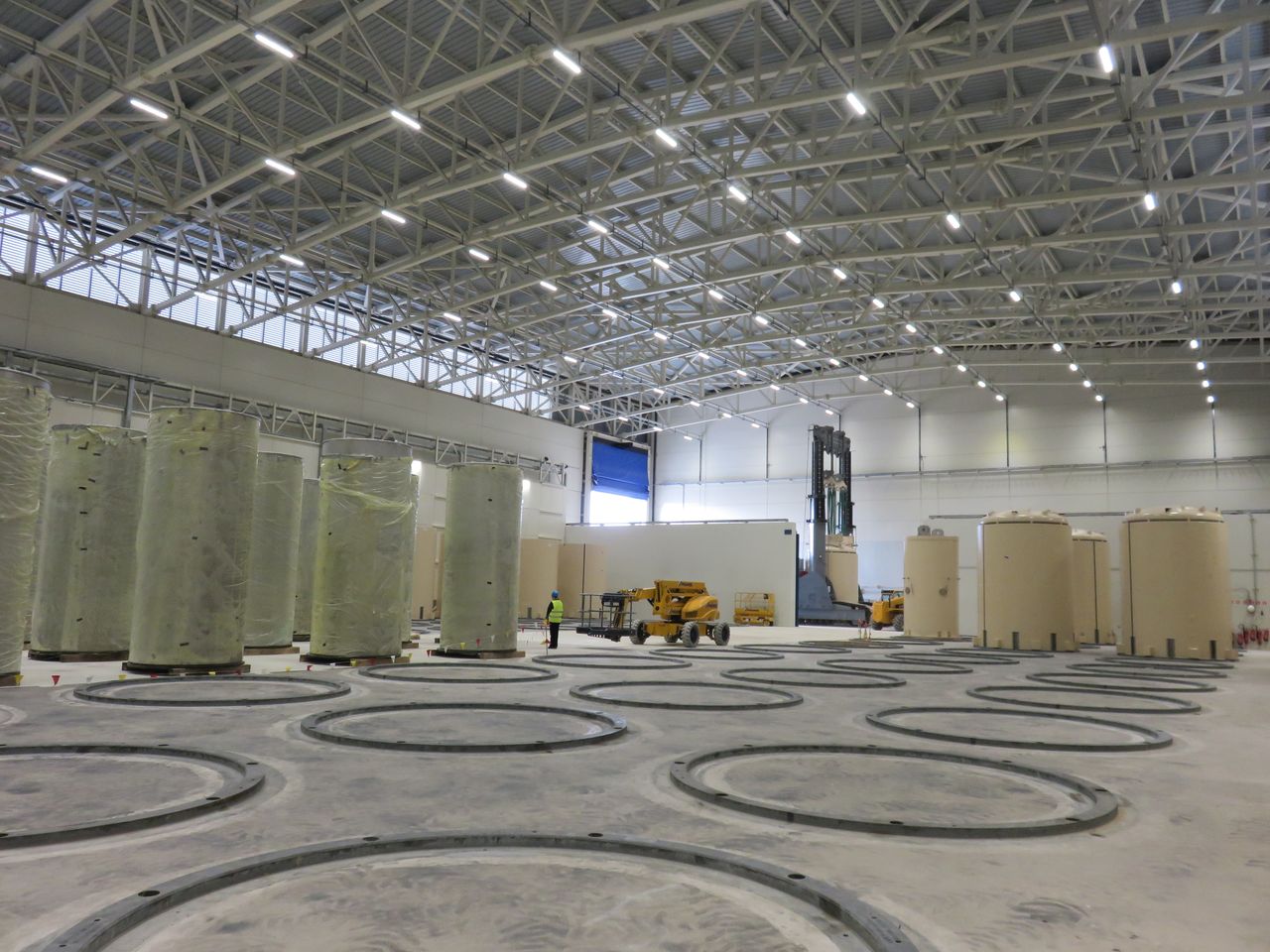
Slovenian nuclear utility Nuklearna Elektrarna Krško (NEK) says the new used fuel dry storage facility at its Krško NPP has been commissioned with the placement by US-based Holtec International of the first HI-STORM FW cask. NEK received the operating licence for the facility from the Slovenian Nuclear Safety Administration (URSJV - Uprava republike Slovenije za jedrsko varnost) in October 2022. Holtec said the first fuel loading campaign will see 16 HI-STORM FW casks placed into the facility.
NEK said the introduction of dry storage for used fuel represents “a transition from active to passive solutions, as no additional device, system or energy source is needed to provide cooling”. NEK added that it was necessary to carry out several administrative procedures in accordance with spatial, environmental, construction and nuclear legislation. “We successfully completed the process of amending and supplementing the NPP Regulatory Plan, which included a comprehensive environmental impact assessment and cross-border consultation with Croatia and Austria, in March 2020. We obtained an integral building permit in February 2021.” An environmental and cross-border impact assessment was also carried out.
The storage facility measures 50 by 70 by 20 metres. The reinforced concrete base plate is 1.75 metres thick, and along with the perimeter walls, provides stability for anchoring the storage containers in place. Monitoring of radiation and temperature is installed as well as the required infrastructure for monitoring by the International Atomic Energy Agency.
The used fuel will be stored in casks each holding 37 fuel rods. The thick concrete shell provides mechanical and radiological protection. Cooling is provided by free air flow. Holtec says the facility is designed to withstand earthquake levels only encountered in high seismic regions of the world, such as California and the Western Pacific, although the seismic hazard at the site is not that high. It is also designed to function under severe flood conditions and to attenuate the accreted dose from the facility to minuscule levels to protect public health and safety. Construction involved rigorous quality assurance controls and local supply chain management, primarily consisting of Slovenian, Croatian and Italian companies.
The seismic restraint system uses a robust steel structure embedded within the thick concrete foundation of the storage building. The HI-STORM FW casks are qualified to a severe earthquake level that produces foundation pad accelerations 2.1 times higher than the earth’s gravity. Furthermore, the storage modules are also engineered to withstand impact from a military or commercial aircraft, exceeding the International Atomic Energy Agency’s (IAEA’s) guidance for operating nuclear power plants. The custom-engineered domed lid of the HI-STORM FW, unique to this project, is a Holtec innovation developed to engineer an impact-capable design.
Holtec says that, as part of the transboundary commenting process, it was decided to implement a non-intrusive leak-indication system to continuously monitor the welded multi-purpose canisters containing the fuel. The system monitors the temperature profile of the casks to detect potential depressurisation. The HI-STORM FW system is designed and licensed as “leak-tight” and the monitoring system serves only as an additional safety measure.
NEK said this technology provides a high level of safety for workers and the environment during the transfer of the used fuel elements from the pool to containers and the transport of the containers to the dry storage as well as for the entire period of temporary storage. The containers can also be used to transport the used fuel to a final repository in future. “In the first campaign, we will move 16 containers with 592 used fuel rods to dry storage by autumn. The transfer will be supervised by URSJV, and it will also be monitored by authorised organisations.
Operation of the dry storage will meet all the conditions needed for the extension of the operation of the Krško NPP. The Krško NPP has a final environmental consent to extend its service life for an additional 20 years (to 2043). The 696 MWe Westinghouse pressurised water reactor was the first western NPP in eastern Europe. Construction started in 1975 and it began commercial operation in 1983.
In accordance with Slovenian legislation, the third periodic safety inspection is underway during which URSJV ensures the NPP meets the criteria for operation over the next 10 years in accordance with the standards of the International Atomic Energy Agency. It should be completed by the end of the year.
“By moving the first 592 used fuel elements to a dry storage facility, we will complete the dry storage project. In this way, we will meet all the conditions and enforce the decisions of the administrative bodies for the extension of the operation of the Krško NPP,” NEK says.